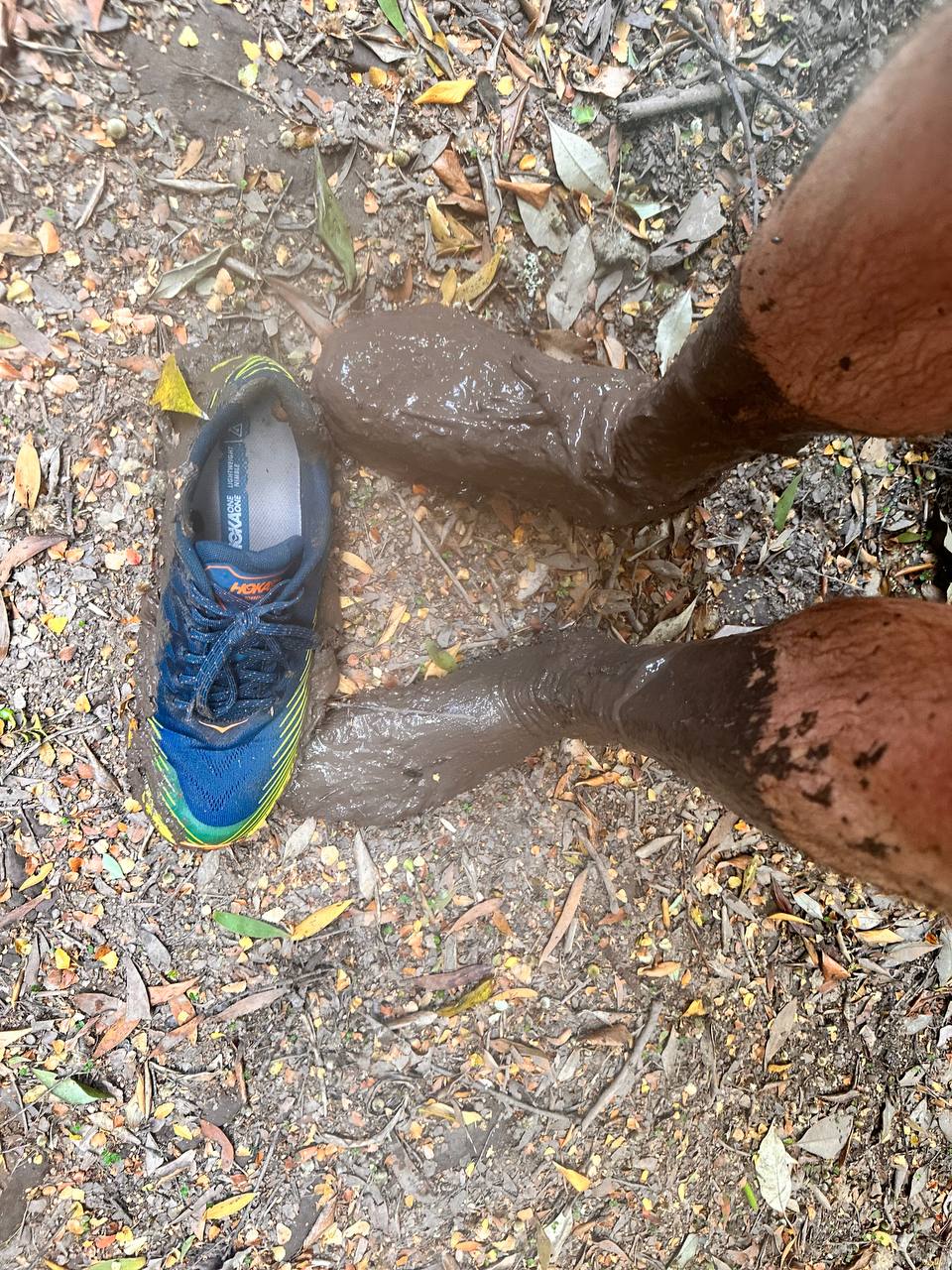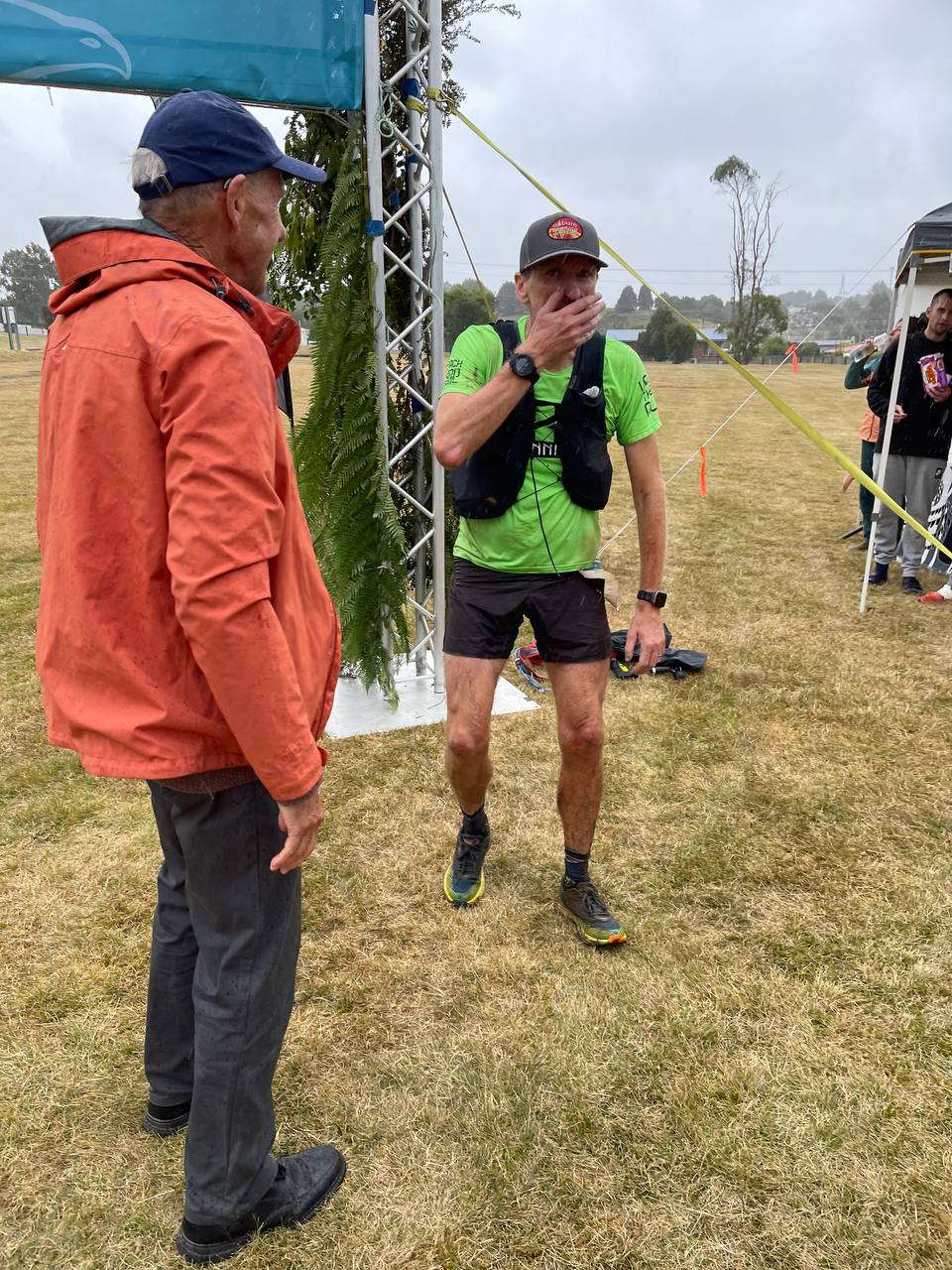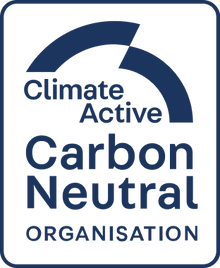The Takayna Ultra is a 62km ultra-marathon event set-up to help save the Tarkine (indigenous name: takayna). An expanse of cool temperate rainforest in Australia, and the second largest in the world.
As a requirement to entry I had to raise $2000 to fund the efforts of the Bob Brown Foundation who campaign to protect wild places and take action for Planet Earth. Easy, as a runner with 23 Ultra Races under my belt and fundraising experience, I was happy to do this and enjoy the unique opportunity to race through the world's 2nd oldest cold climate rainforest. After learning more about the area, the campaign, the threat to this ancient land; it clicked that I was not just part of another race. I was now involved in something much bigger, a microcosm of the destruction of wild places on earth, the heart and lungs of our planet.
The forests of the Tarkine region of Northwest Tasmania are home to one of the last tracts of old-growth Gondwanan rainforest in the world – currently at the mercy of destructive extraction industries, including timber and mining. It became clear I needed to raise more than $2000 and asked Pablo & Rusty’s to help. As a 1% for the planet member they can contribute to approved environmental partners of which the Bob Brown Foundation is one. They were only too pleased to help and what started out as another jog in the forest was now a fundraising campaign.
3 months and 900km of training later, my wife and I travelled to Tasmania with over $16,000 raised.
Before The Race
We arrived in Waratah the evening before the race and headed to the aircraft hanger sized Mens Shed which will be the head quarters for the weekend. We gathered with people from all over Australia, seasoned trail runners and novices, all with a common goal of doing their part to help protect this extraordinary part of the world. Mandatory gear check, a delicious vegan dinner and it was time to get down to the business of why we were really here. A very quiet and attentive audience paid close attention to the various speakers from the Bob Brown Foundation and Patagonia welcoming us to the event, and then Bob Brown himself spoke.
The vibrancy already gathered was then ignited by the passion with which Bob Brown spoke of the Tarkine, the importance of us being there, the gratitude for the funds already raised and stories of the 14 years’ work protecting the rain forests and Aboriginal lands. He spoke of volunteers living in trees and holding down camps to prevent logging roads, unsustainable forestry and the building of a toxic waste dump in the heart of ancient rainforest. This proposed waste dump would be a 140 ha tailings dam built to receive millions of tonnes of toxic mine waste. The race was to be run in the morning, yet as the evening wrapped up, we were left pondering the real race was to protect the planet.
Race Day
At 5am the convoy of buses began the journey to the start line just before sunrise. There would be 50 of us starting the full 62k. The other 110 runners were in the relay or the 22km race. Arriving we donned our race packs full of mandatory survival gear, food and water. The sun rose and we were off.
The first 7km’s of steep downhill was spent trying to save the quads from blowing up in the first hour of the race. Not getting too carried away on fresh legs trying to keep in touch with the leaders. I came into the race a little under trained so getting through it with minimal pain and suffering was the top priority and sensibly I let the race leaders go. Of course what goes down must go up……….for 10km. As we went deeper into the rain forest the trees became larger and it was time to feel the privilege of being in and amongst 500 year old Giant Eucalypts, ancient Myrtle and stands of Huon pine that date back 1000’s of years. The beauty of the forest almost neutralised the challenge of knee high shoe sucking mud and rain filled potholes that littered the trail. It was getting pretty hot as I was joined by a few lads at about 18k, some k’s after our last aid station.
The next water stop was at 36k. We were all running low and at the next stream there was no option but to fill our water bottles from the stream. It turned out to be the most glorious water - if you’ve never been thirsty enough to start worrying about where your next drink is coming from and then hydrate from a cold stream of pristine water, you’re missing out. It’s for moments like these you run ultras!
We were now getting deep into the rainforest. There’s an energy and a feeling you may have no reference point for unless you’ve been alone in ancient wilderness, where stands of trees are four or five thousand years old, untouched, rarely visited, no sound of human construct. Nature just is. It’s an indescribable privilege.
At this point cramp is starting to kick in. It stabs like a knife and I know it will get worse until I’m just running permanently in the hurt locker. They say never try something new in a race but “they” have never had cramps that would stun a bull elephant. So I emptied a sachet of Cramp-fix…………..et voila, Picklejuice - I wasn’t expecting that! But it worked like a miracle. I was to have all 4 sachets by the end of the race which largely held the cramp at bay.
“Smack!”.......my toe hit a rock and I went straight down into the rutted mud with my arm taking the brunt of the fall. I took some bark off and blood started seeping through the mud. I know that the mud will harden and stop the blood and other than a wounded ego the damage is minimal.

The next change of topography was at 38k, “The Buttongrass”. I was looking forward to the 2k of soft heather but I should have researched Buttongrass: 'A tussock forming sedge that grows predominantly in wet, nutrient-poor organic soils' - i.e. waste high shrubs like clumps on a marsh. This wasn’t good for the cramp.
The Last 20Km
Marathon down, 20km to go. The next 10k’s were the most memorable, picking my way through dense wet rainforest, a bouncy carpet of decaying leaf litter, moss covering fallen trees and logs that came down maybe 100 years ago, ferns and fungi. Magical.
The final 10k is a gradual climb on fire trail to the road and then 2k of tarmac to the finish line in Waratah. Bob Brown who by his own admission is a serial hugger gives everyone an embrace as they finish. In my case Bob got the pleasure of hugging a wet, muddied and bloodied (almost broken) runner elated to have finished and experienced a mindblowing run through the Tarkine.

The Learnings
Old-growth forests like the Tarkine are among the most effective carbon sinks on the planet, storing large amounts of carbon dioxide in their biomass and soils. When these forests are logged or cleared, the stored carbon is released into the atmosphere accelerating climate change. It’s critical we can ensure that their carbon storage capacity is maintained.
In a world where we are seeing an increase in forest fires, I learnt we need to preserve these forests. The removal of old-growth trees increases the risk of fires, as they are more fire-resistant due to their structure, high moisture content, and lower fuel loads.
It’s also a critical habitat for several unique and endangered species. It is one of the few remaining strongholds of the Tasmanian Devil, which is endangered due to a deadly facial tumour disease. The region is also home to the Giant Freshwater Lobster, the world's largest freshwater invertebrate, which is endangered due to habitat loss and degradation. The Wedge-tailed Eagle, Australia's largest bird of prey, is listed as vulnerable due to habitat loss and the Tarkine rainforest is an important habitat for this species. Additionally, the Tasmanian Masked Owl, a nocturnal bird of prey, and the Spotted-tailed Quoll, a carnivorous marsupial, are both endangered. The Tarkine rainforest is a critical habitat for both species.

An Answer
There is a way forward in transitioning to an eco-tourism-based economy as a viable alternative to logging and mining that will create new jobs and economic opportunities while also promoting environmental conservation and sustainable development. By leveraging the region's unique ecological and cultural features, developing appropriate infrastructure and amenities, providing training and support for new businesses, fostering partnerships and collaborations, and promoting the region as an eco-tourism destination, the local workforce can embrace eco-tourism.
Getting deep into the Tarkine to experience real wilderness had been on my bucket list since reading about the area in the National Geographic. The race at one level was a vehicle or self-satisfaction. I came away with much more than a place on a results sheet and a tick on my bucket list. I was schooled with many lessons. Australia is being deforested at a greater rate than the Amazon rainforest. Fact: We are accelerating climate change and the risk of bush fires by wilfully destructing these areas. We are creating an poor world for our children and grandchildren. If we continue to make choices for short term gain of a handful of people, the long term looks very, very bleak.
However, there is hope as more and more people become aware and persuade for change. If we succeed in protecting places like the Tarkine, we can enjoy the beauty and wonder of these natural landscapes for generations to come. We can witness the majesty of ancient forests, the diversity of wildlife, and the pristine rivers and beaches that make these places so special. We can also benefit from the ecosystem services that these places provide, such as clean air and water, carbon storage, and biodiversity. By protecting places like the Tarkine, we can create a brighter future for ourselves and our planet, one where we live in harmony with nature rather than exploiting it for short-term gain.
Read our other Impact related blog articles here.



